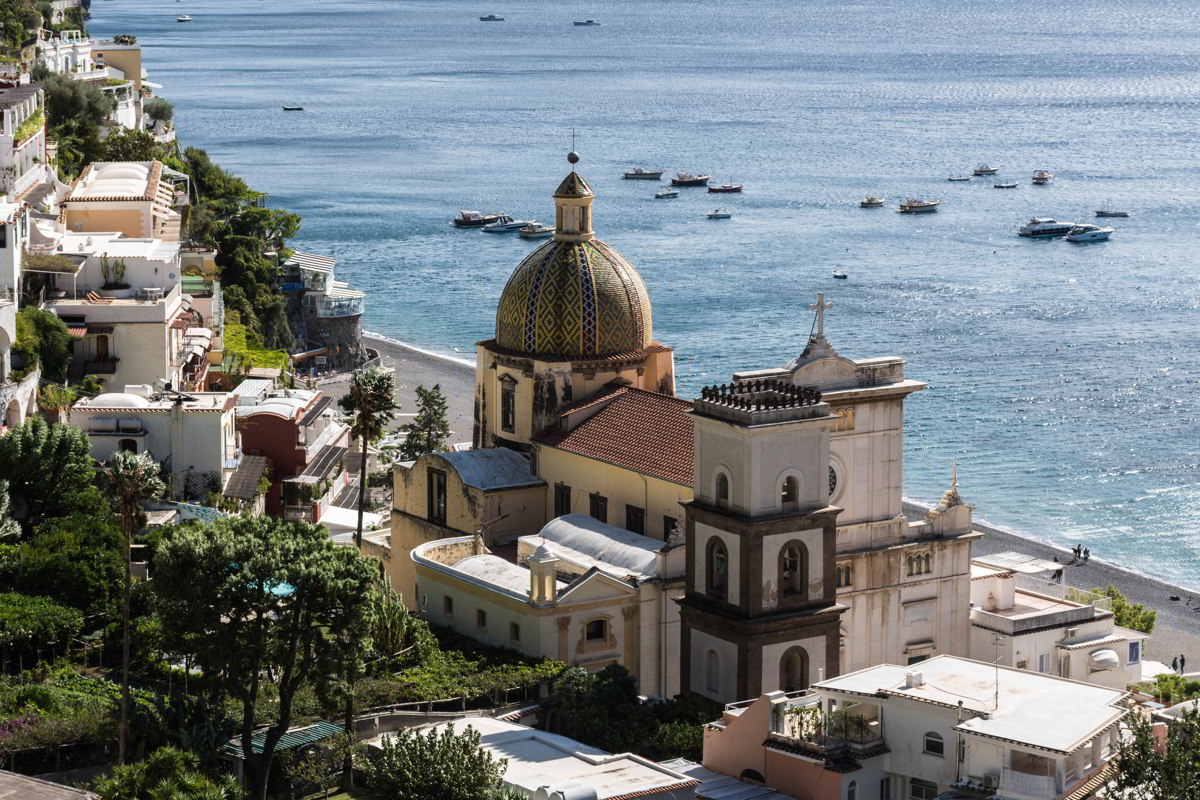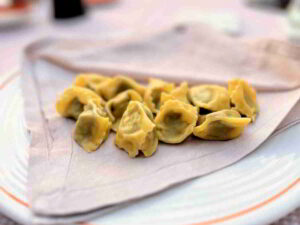From Piedmont to Sicily, uncover less-known domes
Go off the beaten path and uncover less-known and surprising domes on our tours of Italy and marvel at some of the hidden gems that many tourists don’t get to see.
It’s a fact that the famous dome of St. Peter’s Basilica or the one with the roof hole of the Pantheon in Rome is iconic and beautiful architecture. Not to mention Brunelleschi’s cathedral dome in Florence!
However, most tours of Italy don’t include the incredible array of domes that deserves a closer look for their uniqueness and amazing facts.
From Piedmont to Sicily and the Amalfi Coast, our small group tours of Italy take you on a journey to discover treasures on secondary roads like some of the lesser-known domes.

Discover Vicoforte in Piedmont, the Largest Elliptical Dome in Italy
The Sanctuary of Vicoforte, also known as Regina Montis Regalis, is located near the town of Mondovì in the Piedmont region of Italy. It boasts the largest elliptical dome in the country.
With a height of 74 m (243 ft) and two diameters measuring 36 m (118 ft) and 25 m (82 ft), the massive brickwork is sustained by an oval drum. Visitors are left breathless because of the size and richness of the interior decoration.
Designed by Ascanio Vitozzi who began the construction on July 7th, 1596, the original project consisted of an elliptic body originally surrounded by sixteen side chapels of which only four were built.
When the architect died in 1615, only twelve meters (40 ft) of walls were raised and no ceiling was made yet.
The precarious stability caused by the weight of the thick drum, as well as the expensive project and many hostilities between the House of Savoy and the town of Mondovì, which lasted until 1699, led to delays and interruptions of the construction site.

Piedmont tour: The surprising dome of Francesco Gallo in Mondovì
A young local architect, Francesco Gallo, contributed to some of the side chapels of the Sanctuary of Vicoforte where he first arrived in 1702. He then came back in 1729 to complete the dome that we can admire today on a tour of the Piedmont region.
He added a double order of windows to the oval drum, from where the elliptic dome was elevated culminating in the elegant lantern. Francesco Gallo completed what is considered today one of the most significant masterpieces of Baroque architecture not to be missed on a tour of Italy.
The greatest task was to reinforce the foundations of the building which resulted in excessive weight. Gallo added eight buttresses around the perimetral walls previously built by Vitozzi which contributed to sustaining the heavy elliptic dome of Vicoforte.
However, a series of interventions were made in the 1980s when a one-meter crack (3 feet wide) opened up in the vault compromising the structure.
The Origins of the Dome of Vicoforte and the History of Piedmont
One hardly expects such imposing structures as the Sanctuary of Vicoforte to stand in the middle of the countryside. Just a small residential community lives around the shrine in the present day.
Even more so, back in the XVI century, just before the construction began, the area was nothing more than a wasteland.
Carlo Emanuele I Duke of Savoy, depicted in the statue facing the entrance to the Sanctuary of Vicoforte, wanted to gain back the trust of the local population. He was aiming to improving his control over the region of Mondovì which was geographically strategic.
His father Emanuele Filiberto previously decided to pull down the newly built Cathedral, to make room for the military fortress leaving the local bishop disappointed.
In the meanwhile, in Vicoforte, a painting by a local artist named Segurano Cigna, representing the Virgin Mary and the Child, was believed to bleed. This event generated unprecedented traffic of pilgrims which contributed to the urban and commercial sprawl of the area.
Finally, the plan of the bishop to have a bigger temple to host pilgrims, combined with the political interest of the Duke of Savoy – who was also influenced by the devotion of his wife Catherine of Austria – resulted in taking up the construction of the Sanctuary.

The surprising fresco decoration of the dome of Vicoforte
Stepping inside the dome of Vicoforte, everyone’s attention goes to the ornate interior. The inner vault has been covered by 6000 sq meters (64,590 sq ft) of frescoes making it one of the less-known and most surprising domes that one can see on tours of Italy.
It is hard to imagine the two artists Mattia Bortoloni from Milan and Felice Biella from Rovigo standing on a suspended scaffolding, painting with their heads up. Their work shows influence from the Venetian artist Tiepolo. It had to make up for the previous two commissions of 1737 by Antonio Pozzo and 1741 by Giuseppe Galli da Bibiena which did not meet up the expectations.
The theme of Salvation evolves with colors more vivid as the fresco reaches the upper part where we can see the Glorification of the Virgin. The journey of Mary from birth to heaven is narrated with plenty of episodes of her life.
Baroque symbolism reaches Vicoforte at some of the highest levels. Examples are numeric references to the Trinity and to the concept of infinity, light-shade contrasts, and color choices conceived to express feelings.
Marvel at the dome of Ragusa Ibla in Sicily
On one of our tours of Italy, we get to stay in the less-known and surprising town of Ragusa Ibla overlooked by one of the most beautiful domes on the island.
The Cathedral of St. Giorgio is a stunning example of Baroque architecture. Built immediately after the earthquake of 1693 that shook the southeastern side of Sicily.
The dome that sits atop was added in 1820 and features a Neoclassical style with slender columns that sustain the drum and let the light come through several large and tall windows.
A unique choice of elements makes the dome look lighter and taller, almost like a hazard in an area previously affected by earthquakes.

The Baroque Architecture in a Tour of Sicily
Rosario Gagliardi redesigned and rebuilt the Cathedral of St. George on the ruins of the previous one with the impressive facade and the majestic dome standing behind.
The vertical layout of the building is enhanced by the large and high staircase that connects the church to the main square of Ragusa Ibla.
Baroque decorative elements, columns, and a portal with a pointed arch of Gothic-Catalan style decorated with carvings make the facade of the church like a movie set. The interior is less impressive although one can admire thirty-three amazing stained glass windows representing the martyrdom of St. George.
The evolution of Baroque architecture across Italy can be perceived only with tours that explore several regions. If in Piedmont such a style is considered a bit more discreet compared to the opulent Baroque of Rome, it is in southern Italy, Apulia, and Sicily, where the style reaches the most theatrical and elegant look.
Offbeat Tours of Italy: local rivalry and Disputes in Sicily
The construction of the elegant dome of Ragusa Ibla completed in 1820, was meant to make the Cathedral of St. George overshadow the Cathedral of St. John, built almost simultaneously by hated rivals in the newer section of town.
There has always been a strong rivalry in the city between two groups of worshipers, those of San Giorgio against those of the church of San Giovanni.
As both churches were destroyed by the earthquake, a new church built halfway between the two parts of Ragusa would have seemed to be a reasonable compromise. Despite the effort, the constant boycotts by the two factions led St. George supporters to commission in 1738 Rosario Gagliardi to design their new cathedral.

The less-known ways to see the Dome of Ragusa
While many entire cities were rebuilt soon after 1693 following the Baroque architectural model, the dome of Ragusa Ibla came over a century later when the style used was already Neoclassicism.
Despite the delayed construction, the elegant elements of the dome perfectly match the theatrical, Baroque-looking facade of the church. The whole complex overlooks the maze of steep stairs and alleyways that look like they are crowned by the slender dome.
When visiting Ragusa Ibla, we suggest climbing the flight of steps next to the church and reaching the highest point of town located behind the dome.
From there, one gets breathtaking views over the rooftops perched on the cliff and its surrounding canyons. Certainly a hidden gem on your tour of Italy’s less-known domes.
Visit the lesser-known but stunning domes of the Amalfi Coast
While the Amalfi Coast is known for its stunning coastline and picturesque towns, it also boasts some stunning domes completely covered in colorful ceramic tiles.
The church of Santa Maria Assunta in Positano features a maiolica-covered dome that reflects under the sunshine. In nearby Praiano, the local church stands next to the Amalfi Coast road and it can be seen from far away.
More domes of this kind can be seen in the village of Atrani, in Maiori, and in Vietri sul Mare. They shine under the sun and they can be spotted from far away.

The ceramics on the domes of the Amalfi Coast
The use of tiles, and mosaics made of ceramic dates back to the XI century, and it was brought to Italy from the Middle East.
As the Mediterranean has been an intense center of communication, trade, and cultural exchanges, southern Italy was conquered by several civilizations.
The Arabs brought here the ancient techniques of using ceramics to embellish sacred or important buildings. It was a common thing in Iraq in previous centuries and within the Muslim culture.
From the 1500s, ceramic started to be used in churches because of its long-lasting bright colors despite the exposure to sun, wind, and rain. Such a traditional construction system became outdated approximately around the 1800s.

Patterns and colors on the domes of the Amalfi Coast
The number of colors found on the domes between Positano, Atrani, Maiori, and Vietri sul Mare goes from two to five.
The most common ones were green which recalls the surrounding lemon and olive orchards, yellow like the color of the sun, and blue, the sea.
Tiles were fixed on the rooftop of domes following specific patterns, the most common being diagonal lines, parallel to each other, often depicting V-shaped decorations. Another common decoration was the fishbone design, rhombus, or concentric circles.






